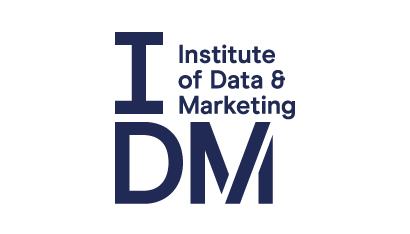An introduction to Social Listening
Social listening is vital to understanding your consumer base and tracking trends. In this article, you’ll learn how to get started.

In the digital age, it’s important that your brand stays up to date. One way that companies do this is through the relatively new practice of social listening.
In this article, we’ll explain what social listening is, why it matters, tools for social listening, and how to get started.
What is social listening?
Social listening is the process of analysing the conversations and trends that are occurring around your brand and industry as a whole, and then using that information to make smarter marketing decisions. It’s one of the most important digital skills for succeeding in today’s marketplace, and usually forms part of a broader social media marketing campaign.
It explains why, where, and how these discussions take place, as well as what people are saying. This aids in the creation of future campaigns, the improvement of content strategy and messaging, outpacing your competitors, the development of an effective influencer programme, and even the formation of more impactful brand alliances. Social listening, in other words, is the process of acting on the information you’ve gathered.
While social media monitoring considers factors such as engagement rate and number of mentions, social listening considers the sentiment underlying the data. This will assist you in determining how people see you and your competition.
Social media sentiment refers to the general mood of your brand on social media. Monitoring social media sentiment is an important aspect of social media listening.
You can keep your marketing and product development activities on track if you know how people feel about your brand. It also enables you to respond to favourable or critical comments immediately.
Why does social media listening matter?
Social listening can be used to start new discussions, get audience insight, identify advocates or influencers, establish brand affinity, and find real-time customer service and sales opportunities. Done well, it’s a crucial part of a creative marketing campaign.
Your team will be able to understand how you compare to your direct and indirect competition by using social listening. Your insights team will be able to discover competitors and understand where your company falls behind in other aspects of the business, such as customer service, client retention, reputation, and other things, with this data at their fingertips.
You’ll also be able to discover where you succeed and where you fall short in your sector. Knowing where your brand lags and where you surpass client expectations will help you perfect the areas where you’re currently succeeding and create a plan to enhance the areas where you’re falling behind.




Understanding customers
Monitoring industry conversations reveals insights into what’s working and what’s not for your customers. Your marketing team will benefit greatly from this information.
Perhaps you can improve an existing product or add a feature to address the issues that are being discussed. You might be able to come up with fresh product ideas based on what you’ve learned.
You’ll learn about customer frustrations about your current products so you can make changes to address the issues. You can then use a targeted marketing effort to notify your customers about it.
Understanding competitors
Social listening tells you what people have to say about your competition. This – and other social media marketing methods – provides crucial information about your place in the industry.
Using social media listening methods, see what your competitors are up to in real-time, such as when they launch new products, develop new marketing efforts, or generate bad feedback. Social listening notifies you to new possibilities and threats as they arise, allowing you to prepare and respond accordingly.
With these tools, you’ll learn from your competition, seeing what they do well and what people admire in them, as well as where they go wrong and make mistakes.
Identifying potential new customers
When a large number of consumers start complaining about the same issue – or praising the same thing – it’s time to pay attention. You can utilise social listening to uncover methods to innovate on these developments, rather than just observing them.
For instance, maybe you work for an adult learning centre. Your customers have been sharing how frustrated they are about courses filling up so quickly. There is an opportunity there for you to consider creating more courses, opening up more places in each course or moving to larger premises.
Tracking positive trends
You can track sentiment in real-time with social listening. You’ll be able to observe which posts are working for your brand and which aren’t. You’ll be able to better tell the story of your brand.
If you’re getting a lot of positive feedback, try to figure out why. Your customers will offer useful information about what they like and don’t like. These lessons can aid in the development of your marketing approach.
Tracking negative sentiment
Brands are occasionally involved in scandals or major difficulties. Things happen, but even a single incident might trigger negative sentiment.
This is an excellent opportunity to employ social listening techniques. By looking into the recent incident, you can observe if the increase in unfavourable comments has resulted in a drop in followers, sales, or any other statistic you choose to look into. Then you can figure out whether you need to take serious action or if it’s just a phase with no long-term consequences.
Staying up to date
In the age of the internet, brands are expected to respond to new situations instantly. Therefore, it’s important to use technology solutions to save time. You get more time to work on content strategy and figure out changes to your processes by letting algorithms handle the most frequent, time-consuming chores.
You can demonstrate your agility with limitless research results, precise analysis, and quick reputation management. You can get an unbiased assessment of customer preferences and needs by using social listening. Use this data to improve the way you engage with customers, calculate your ROI, and determine your market position.


What is the difference between social listening and social monitoring?
Social monitoring is simply observing social media. Figures and statistics acquired from social channel monitoring aid in spotting patterns and gaps in your marketing.
Social listening, on the other hand, takes the raw data and converts it into insights that can be used to identify possibilities for your company to expand and thrive. It can assist you in consolidating your position in existing markets, expanding into new verticals, or improving customer service and brand loyalty.
What social listening tools are there?
The savvy marketer now has a seemingly limitless supply of social listening tools available to them; these are just a few of the ones available.
HubSpot
HubSpot has a social media solution that can assist you in prioritising your social connections and connecting with the appropriate people. You can create marketing campaigns, share material such as blog articles and landing pages, automatically share information to numerous social media platforms, and determine the optimal times to post all in one tool.
You can also track social interactions with contacts in your database, develop custom keyword monitoring streams, and set up email alerts to notify your sales team when prospects mention you on social media.
You may also track the number of visitors and leads you receive by comparing performance across your social media channels. Hubspot has an all-in-one inbound marketing platform that benefits your entire team and allows you to integrate social media into your business.
ReviewTrackers
ReviewTrackers allows you to monitor reviews from more than 50 review sites, including TripAdvisor and Google Maps.
You can analyse the reviews while filtering them to control the ones that matter the most to your brand. Plus, you can publish positive company evaluations on social media.
Sprout Social
Sprout Social provides social media management software with the goal of improving your social media interactions with customers and prospects. You can use the Sprout Platform to obtain in-depth data analytics to support strategic decisions, streamline and scale your engagement activities, publish content and campaigns, and identify trends and insights through social listening to drive strategic changes, all with the help of the Sprout Platform.
Twitter Listener dashboards and statistics are available from Sprout Social to help you analyse your Twitter presence. In addition, the technology tracks direct communications and brand-specific keywords using real-time brand monitoring. It also has strong social listening capabilities to help you spot new trends and influencers. The software provides data that can help you track and enhance your social strategy over time.
Talkwalker
On just one dashboard, Talkwalker analyses blogs, forums, videos, news sites, review sites, and social networks. They use more than 150 million sources and compile that information into useful data. You can track and analyse conversations about your brand, including engagement, reach, comments, and sentiment.
Hootsuite
Hootsuite also has a platform for social listening and monitoring. The social media marketing and management dashboard aids in the development and maintenance of interactions with your social media following.
Hootsuite allows you to access all of your messages, comments, and brand mentions across several social platforms in one convenient dashboard and respond to them all.
You may also organise your influencers and leads into lists that can be shared with others in your organisation. Hootsuite’s analytics and reporting may help you keep track of what’s being said about your brand, competitors, and industry, and adjust your campaigns accordingly.
Adview by Synaptive
Adview is a Facebook and Instagram Ads social listening tool. You can monitor up to three distinct Facebook Ad Accounts across an unlimited number of pages with this specialised software. You’ll also be able to discover which of your Instagram and Facebook advertising is generating the most engagement by looking at the stats.
If your team also uses Hootsuite, you can integrate Adview into the programme to respond to and comment on different ads right from the dashboard.
How to get started with social listening
1. Monitor keywords
You’ll need to start monitoring keywords to get started with social listening. These include your company’s brand name and handles; product names; competitor brand names, product names, and handles; and the names of key people in your company. You should also keep an eye out for common misspellings and acronyms. At this point, you also want to develop a wider social media strategy.
2. Choose your platforms wisely
Find out which platforms your audience is using. Your social listening programme should cast a wide net; it’s just as vital to know where people are talking about your organisation as it is to know how they are talking about you. It will provide you with a clear strategy for joining the discussion both organically and through paid advertising.
3. Analyse trends
It’s not just about collecting data when it comes to social listening; it’s all about figuring out what your current and potential customers want from you and how to offer it to them. Rather than focusing on individual remarks, look at patterns and trends over time. These broad findings can have a significant impact on your future strategy.
It’s critical to get this right as soon as possible if you’re going to continue collecting data indefinitely. If you discover after six months that you’ve been gathering incorrect data or have overlooked critical areas, you’ll have wasted a lot of time and effort.
4. Get your team involved and stay up to date
Involve all the necessary teams and get regular feedback to identify any issues. Conversations on the internet move at high speed, so double-check your findings. Regular meetings will also help you keep your digital marketing strategy on track.
For the same reason, you should update what you’re tracking. If a new rival enters the market or a new product is introduced, you must ensure that data is collected to capture these events.
Final thoughts
Social listening is a complex and multi-layered process, but one that is well worth employing if you want your company to thrive. Fortunately, the tools and courses on offer now make this challenging task far simpler for even the smallest of businesses. Thanks to these tools, independent firms can compete on the same field as multi-national corporations.




